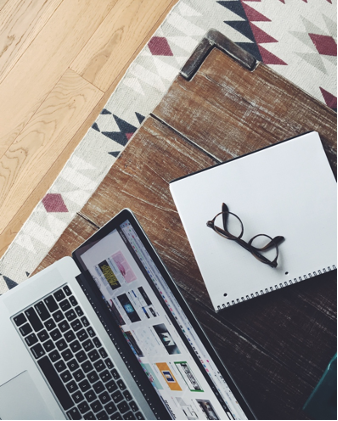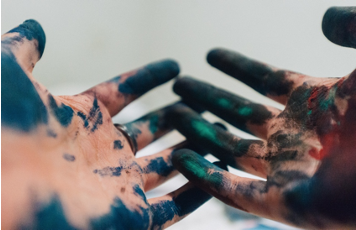
Award-winning interior design student Ellie Granville shares the secrets of standing out from the crowd
Well for starters, this isn’t a step-by-step instruction on what exactly to put into your portfolio because if I did that, it would probably be boring. What I am going to do instead however is give you some tips and tricks on what could be in your portfolio, maybe what a possible recruiter is looking for and a general overview of what your portfolio should include.
Sound good to you? If so, keep on reading…
If you were like me and do not have a clue on how to make a portfolio but no one would explain how? I feel your pain. Well, this is going be perfect for you! Okay, so for starters a portfolio doesn’t have to be your best work plopped onto a white page, even though that is what we all automatically think.
What size should your portfolio be?
So, this is a hard one because different companies and institutions might have different criteria for this. Most of the time I would recommend working in A2 but again some companies or institutes may require larger or smaller portfolios, even digital submissions. But to keep it easy work and from A2. You can always work around the sizing if transferring to different documents – simple solution, make the imagery of your work bigger or smaller depending on what you need.
A digital portfolio is a whole other article!
What should your portfolio include?
A portfolio should represent you in the best way, that includes adding some development work in and including just a couple pieces that you might not like. These all invoke a conversation. You will be able to talk about your portfolio, with confidence. This will allow those around you to understand who you are. Also, showcasing your interests and passions whilst showing pieces you don’t like and why is critical as it proves that you have your own opinion, but you also can learn from previous works.
Your portfolio should be clean, have crisp edges and reflect your style through your work. That is what they want to see, YOUR WORK.
Another thing to possibly include is some mixed media, it showcases your ability to work with other mediums whilst still achieving your design goals. You would be surprised by how many people enjoy seeing 2D work, whilst also craving to hold the mini model for the project you have been currently working on. One of my previous portfolios has mediums from clay, acrylic and house paint, to dyed rope, and imagery of me throwing wet cement at a wall to create abstract shapes. If I can put those in there, you can put anything.

Having a contrast between imagery, like using grayscale, polaroid and coloured rendered photographs can allow the pages to tell a story. It makes the pages pop. Development imagery can be used in a grayscale and shaded tones. It is always good to show some development imagery like plans, initial drawings, sketch models or if you’re a finer art or illustration-based artist then your progression from initial ideas to final piece.
I know your reading this and you’re like Oh My Gosh, but don’t panic and just do it little by little instead of trying to do it the day before its due. Yes, I can sense what you’re thinking.
If your piece is a statement, make sure that is represented on the page. An example would be a bold image, central to the page and smaller, more detailed development shots, placed around the piece. This would give a clean look to your portfolio but also informative to your statement piece.
Don’t feel like you need to have to same looking portfolio as someone else. You are unique, use it!
How to present your portfolio?
If you tend to struggle with presenting in public, maybe you can imagine everyone in their underwear? Only joking… maybe. Hey whatever works for you!
When I present in front of people, I tend to try and focus on what I know about my project. I tend to try and put small details in my projects for myself, to make it lighter and easier to communicate. Like adding a computer in with my actual home screen or creating a render with my best friends face in it. The key is to not over do the prepping for the presentation. Too much over prepping can make you more anxious and more likely to mess up. Try and think of it as a conversation and focus on a specific person.
So, what to do:
- Fake it till you make it (with confidence)
- Be you – your perfect
- Know your work!
- Go with the flow
And if you mess up, it isn’t the end of the world, so don’t beat yourself up about it.
You’re probably thinking by now, that a portfolio seems like a lot of effort. It is, but it is vital to showcase your work. Remember a little bit at a time. What do they say? The slow turtle won the rase. But if you take anything from this article, make sure to represent you, nobody else, just you.